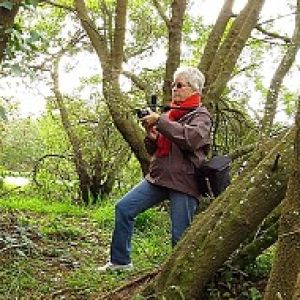Kotuku or White Heron.
I would whole heartedly recommend a visit to the breeding ground of the white heron or Kotuku. Blip mate and I were lucky to do this trip and even luckier that the one fine day we had was the day we visited the breeding colony. We had no internet or cell phone coverage so the photos and Blipping had to wait until once we were home again.
The white heron, a member of the Great Egret family. is not common in New Zealand with a population of only 200. At three years of age they are ready to breed. Their beaks change from orange to black, they develop a green/blue colour around the eyes, long white lacy feathers on their back and fly off to the only place in the country where they breed.
We journeyed to Hari Hari and then the next day on to Whataroa. From there it was a 10 minute van ride, 20 minutes in a jet boat and a 500 metre walk to the Hide which is just across a pool of water from the nesting herons in the Okarito Lagoon. Not only do the herons nest there - little shags and spoonbills have also staked a claim on the area and were busy building nests.
The white herons choose a new mate each season and indulge in what looks like very affectionate behaviour with much caressing with their necks and placing the bill against and in their mates bill. The males would bring sometimes unwieldy lengths of wood for the female to accept and add to the nest
As it is early in the season there were no chicks as yet, but one pair had two large blue-green eggs in the nest.
Blip: Once paired off, there is a lot of bill stroking and touching
There are more photos in the extras.
1. Showing the beautiful colour that develops around the eyes.
2 & 3. Some mating behaviour.
4. A view of the pool. The white patches are the reflections in the water of nesting pairs.
5. The Kotuku or White Heron.
6. The view from the Hide showing the nesting birds.
- 49
- 34
- Canon EOS 700D
- 1/500
- f/8.0
- 300mm
- 200

Comments
Sign in or get an account to comment.


